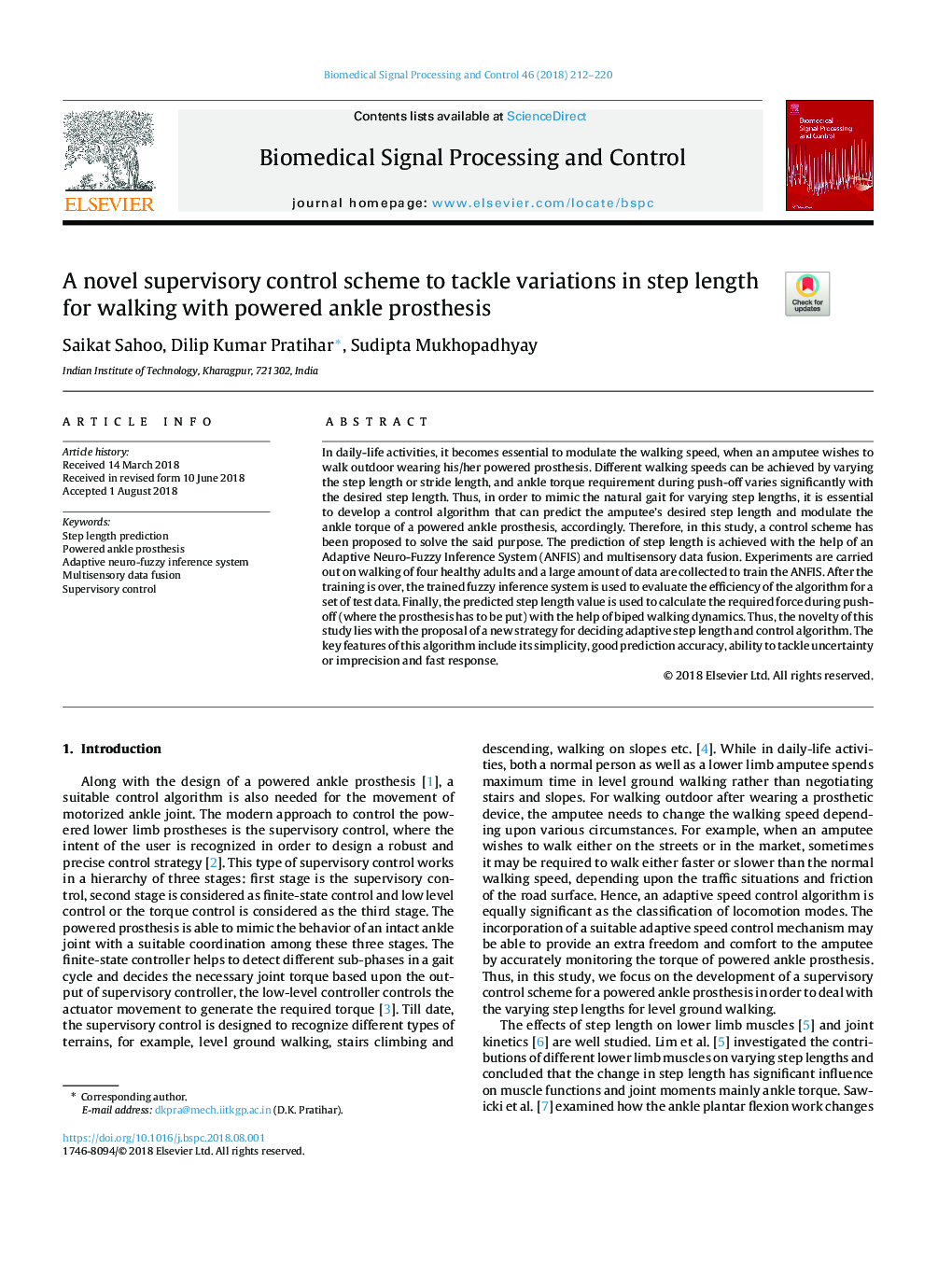| Article ID | Journal | Published Year | Pages | File Type |
|---|---|---|---|---|
| 6950667 | Biomedical Signal Processing and Control | 2018 | 9 Pages |
Abstract
In daily-life activities, it becomes essential to modulate the walking speed, when an amputee wishes to walk outdoor wearing his/her powered prosthesis. Different walking speeds can be achieved by varying the step length or stride length, and ankle torque requirement during push-off varies significantly with the desired step length. Thus, in order to mimic the natural gait for varying step lengths, it is essential to develop a control algorithm that can predict the amputee's desired step length and modulate the ankle torque of a powered ankle prosthesis, accordingly. Therefore, in this study, a control scheme has been proposed to solve the said purpose. The prediction of step length is achieved with the help of an Adaptive Neuro-Fuzzy Inference System (ANFIS) and multisensory data fusion. Experiments are carried out on walking of four healthy adults and a large amount of data are collected to train the ANFIS. After the training is over, the trained fuzzy inference system is used to evaluate the efficiency of the algorithm for a set of test data. Finally, the predicted step length value is used to calculate the required force during push-off (where the prosthesis has to be put) with the help of biped walking dynamics. Thus, the novelty of this study lies with the proposal of a new strategy for deciding adaptive step length and control algorithm. The key features of this algorithm include its simplicity, good prediction accuracy, ability to tackle uncertainty or imprecision and fast response.
Related Topics
Physical Sciences and Engineering
Computer Science
Signal Processing
Authors
Saikat Sahoo, Dilip Kumar Pratihar, Sudipta Mukhopadhyay,
